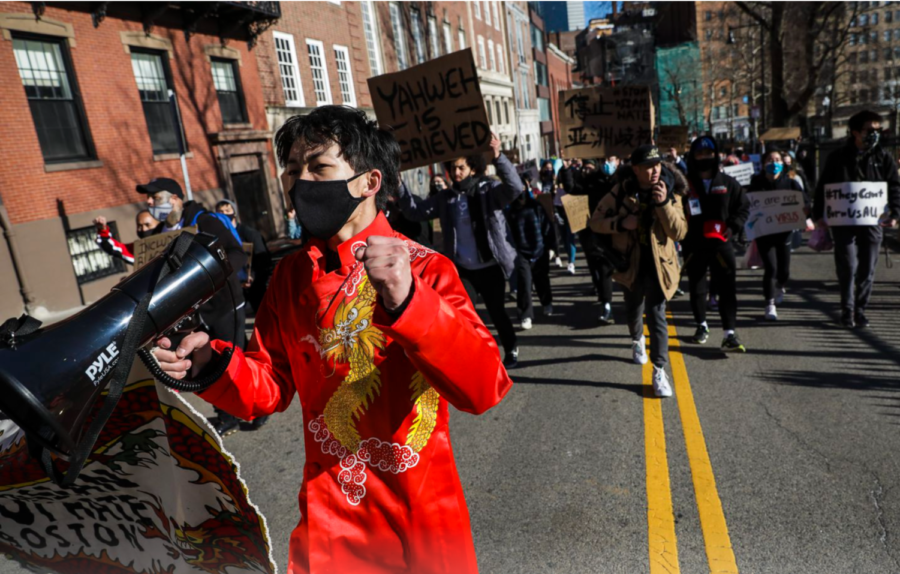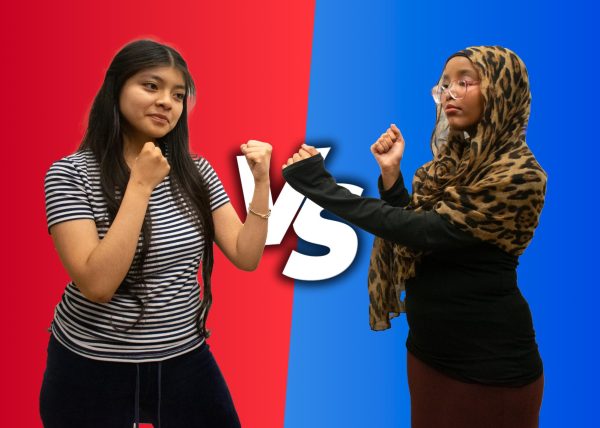We Need to Stop the Anti-Asian Hate
Erin Clark (Boston Globe Staff)
The “Stop Asian Hate” rally is one of the protests that have occurred to combat anti-Asian sentiments.
On the morning of January 28, 84-year-old Thai elder Vicha Ratanapakdee was fatally shoved to the ground while on his daily morning walk in San Francisco, California, sparking outrage and protest among the Asian American and Pacific Islander (AAPI) community.
Racially motivated attacks against AAPI, like Ratanapakdee’s, have reached an all-time high, appearing nearly 150 percent more frequently across major American cities in 2020, according to Columbia Broadcasting System (CBS) News. Harrowing statistics like these reflect a growing trend of discrimination and hatred towards the AAPI community during the COVID-19 pandemic, given the virus’s origin in Wuhan, China.
Hate crimes toward the AAPI community are the result of harmful stereotypes and internalized xenophobia that continue to persist in present-day America. Many attribute the surge in AAPI hate crimes to former President Donald Trump, who prefaced the trend through his labelling of COVID-19 as the “Chinese virus,” associating the disease with its origin country. This, in turn, has perpetuated contempt towards the AAPI community for their perceived association with China. Such hatred was initially directed toward those of Chinese descent, now encompasses the entire AAPI ethnic group.
BLS Asian Students in Action (ASIA) officer, An Tran (II), adds, “Hate has always been normalized for Asian Americans since the Chinese Exclusion Act. It is only more prominent and coming into [the] light now because Asian Americans are being scapegoated for the coronavirus and anger [and] anxiety from others is being projected on this group.”
Despite the myriad of recent AAPI hate crimes, they are often overlooked because of sparse coverage by major news outlets. Much of this can be attributed to ignorance toward anti-Asian American crimes, as they make up only five to six percent of the national population. In addition, Asian Americans themselves have been taught to keep quiet about racist attacks toward their community in order to avoid conflict, thereby normalizing such issues and subsequently ensuring that less attention is given to them in the future.
Furthermore, on the subject of ignorance, the so-called “model minority” myth assumes that Asian Americans have achieved higher levels of class privilege and higher levels of success when compared to other minority groups. This stereotype, however, delegitimizes the discrimination that Asian Americans commonly face, and unfairly pits Asian Americans against other minority groups as they seem to be the only group capable of achieving the “American Dream.” More importantly, this common misconception is blatantly false: in actuality, Asian Americans face the largest income inequality gap among all racial groups in America.
“Having stereotypes like the “model minority” prevents actual real progress to be done for BIPOC (Black, Indigenous, and people of color). Not only has it allowed for issues like language inaccessibility and civic engagement in Asian communities to be ignored, but it has caused a high divide within the BIPOC groups of Boston Latin School,” explains BLS ASIA officer, Mandy Sun (I).
Sun continues, stating, “I’ve had Black people come up to me saying I don’t face racism. Ultimately, these stereotypes take us steps backwards for the entire movement [of] White supremacy, which is truly the issue here.”
In order to combat such stereotypes such as the “model minority” myth, more action in the community and in schools needs to be taken. The American education system is highly Eurocentric; by updating current curriculums to become more diverse, students will have a better understanding of other ethnic and cultural groups, and especially their significance and relevance today.
Engaging in meaningful conversations about these harmful stereotypes, even in close circles is important to stimulate deeper discussions about pervasive issues. These considerations will allow everyone to be challenged in their viewpoints and exposed to new perspectives, thereby gaining a better understanding of racism and fostering empathy for those undergoing struggles.
Ultimately, holding oneself and others accountable is a crucial step towards becoming a more empathetic and respectful community. Educating oneself, speaking up against discrimination, calling out bigotry among those in power and voting for those who best represent the greater community are key ways to lessening the burdens that the underrepresented and underprivileged now face.
History teacher Mr. Andy Zou concludes, “When [students] speak out against [racism], it’s really important, because it’s not just Asian Americans as a group. These people are […] your family members, your friends, your classmates, and you know what they’re experiencing is not right. And it’s wrong for America.”







